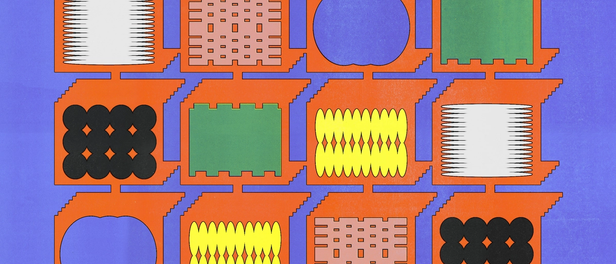Karri Saarinen’s 10 rules for crafting products that stand out


Linear’s CEO shares his approach to quality at a time when “move fast and break things” no longer cuts it—catch him at Config 2025 alongside a lineup of makers redefining tech’s future.
Hero illustration by Luis Mazón
Our Config 2025 agenda is now live
Join us at Config 2025 in San Francisco (May 6–8) to hear more from Karri and an exceptional lineup of makers who are redefining technology’s future. Virtual is always free.
As CEO and Co-founder of software development platform Linear, Karri has built his success by making impenetrable quality his differentiator in a crowded startup market. His approach offers an alternative to the Zuckerberg “move fast and break things” mantra, which may have worked years ago but no longer resonates in today’s more mature, design-conscious market. “You have to match that level of capability or quality, otherwise people just don’t pay attention,” he says.
This focus on craft solved what Karri calls a startup’s biggest challenge: getting people to notice and care. For Linear, the solution was to lean into craft. “We started with quality,” says Karri. “Then we learned that people actually noticed, because it’s a rare approach—especially for startups.” Take note, attention-seekers: Here, Karri spills his 10 rules for building with craft.
1. Commit to quality at the leadership level
If you want to build a culture of quality, you need buy-in from the top. You have to set the tone that craft is the most important priority for teams to follow. This high-level commitment creates a permission structure to build craft into everything your company does. Where companies fail is when they say craft is important without a clear plan for implementing it. You have to ask: Why does it matter to your business? I saw what design did for Coinbase while I was there. Design made the crypto space more approachable and understandable. Those elements matter when you’re trying to go mainstream.
2. When it comes to building teams, go small and aim high
The more people you have, the more opinions and deliberation you introduce, which dilutes the quality of the execution. By contrast, small, high quality teams produce good work, quickly. So how do you build these small but mighty teams? Hire craft-oriented people who already produce great work. It’s not about measuring output; it’s about setting a standard.
3. Do away with handoff
A commitment to quality is all about being able to connect the dots. An over-specialized team—where a product manager decides what to do, a designer visualizes it, and an engineer builds it—creates silos. At Linear, we have connected teams in which everyone is responsible for the quality. There’s no “handoff to dev.” You’re never off the hook. We’ve found that when everyone understands how designs are implemented, and shares responsibility for the result, we’re far more likely to achieve high quality.
4. Resist creating specialized product teams
Another factor when structuring for craft: Avoid too many defined product teams. Companies tend to create these teams to simplify organization for leadership, but it ultimately creates artificial quality and culture silos. Before you know it, your org chart has high quality outputs in one area and lower quality in another, or some teams that are experimental while others aren’t. At Linear, we don’t have established teams where someone works on search every day. It’s difficult to consistently churn out good ideas on the same thing. Instead, we rotate responsibilities to keep ideas fresh. At the end of the day, users don’t care about your org chart—they care about the experience.
5. Consider the spec your baseline minimum viable product, not your goal
Today’s startup market, full of high quality competitors, requires excellence to stand out. A great product requires someone—or many people—to put more care into it than necessary. You could always build something to spec. A door is a door, and if it opens, it technically functions. It’s easy to meet the spec. It’s harder to do the craft. For quality, you need a team that views the spec as the baseline, not the finish line.
For quality, you need a team that views the spec as the baseline, not the finish line.
6. Quality is not perfection
All of a product’s details need to be correct before public release. But that doesn’t mean it has to be perfect. That’s what beta users are for! It’s fine to start with something rough and iterate toward polished craft. Just don’t show it to customers before it passes your quality bar. That threshold can be hard to measure: You can count defects, but excellence is harder to quantify. Like craft itself, our success metrics are often qualitative. My definition of success is seeing Linear in organic conversations about quality solutions.
7. The best design is opinionated
You can only create a great product if you design for someone in particular. It’s nearly impossible to design a product for everyone. The more specific your product’s purpose, the better it will perform for its intended use. You can build a product that is flexible, open-ended, and kind of good—one that works fine for different use cases. But it won’t be great at anything specific. That’s a weaker position, because products need a clear value proposition to win a market and users’ trust.

Linear plugin for Figma
Stay in the flow with the Linear plugin. Create and link Linear issues to Figma designs without leaving the canvas, keeping everyone aligned across teams and tools.
8. The simplest way to increase quality is to reduce scope
People who find quality difficult are typically trying to do too much. If you can’t do everything well, start by doing less, and take on projects piece by piece. Can’t figure out a whole feature end-to-end? Just build part of it and do that part exceptionally well. Then gather feedback when people start using it. At Linear, we don’t believe that quality requires slowing down. You need to care for details, but not all parts simultaneously. Quality isn’t binary—it’s about continuously refining a product to meet a standard.
Quality isn’t binary—it’s about continuously refining a product to meet a standard.
9. Don’t get locked into one way of doing things
People ask us how we do things at Linear, but we don’t have a singular process. Instead, we establish values and principles so that team members think about what they’re building and why. We hire engineers and designers who consider the product and business more broadly, and connect them directly with the users through shared Slack channels. We push direct responsibility onto the team, giving them the freedom to make decisions, while setting a standards bar for them to meet.
10. Data can be a crutch
At Linear, we don’t make decisions based on data or experiments—including A/B tests. To design with craft, you must develop and trust your intuition. Yes, you might make wrong choices, but those mistakes become thought experiments: Why did you go wrong? Did you talk to users? Did you listen to them? This approach puts more responsibility on the team without offering easy outs.
To provide the best experience, you must surprise users. You can’t expect data—or even people themselves—to tell you how. Quality is hard to measure, so you must be comfortable making decisions without data as your guide. Success depends on hiring people who care about the craft and can make informed decisions based on their expertise.
To provide the best experience, you must surprise users. You can’t expect data—or even people themselves—to tell you how.
Karri’s approach to quality and craft represents just one perspective in the broader conversation about technology’s future. At Config 2025, you’ll hear from makers who are steering technology in more thoughtful, human directions.
View the full agenda lineup, now live on config.figma.com.

Karri Saarinen is the CEO and Co-founder of Linear.app, the more enjoyable and efficient way to manage software development.




